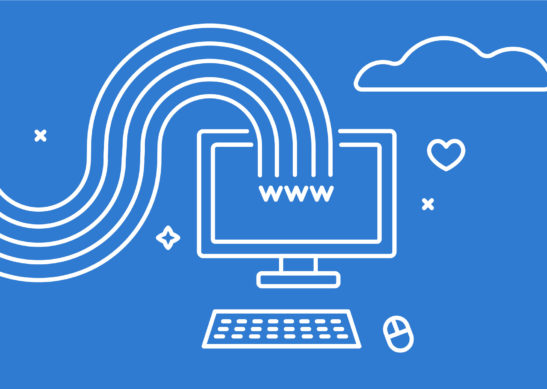
Reaching Customers Will Be Different, but Equally Effective, in the Future
When third-party cookies meet their expiration date in 2023, advertisers will say goodbye to the digital targeting of today and say hello to a new way of marketing.
Yes, the future of digital advertising on the web will be different. On the surface, it appears that a number of critical capabilities will no longer be available without cross-site tracking, namely cookie-based targeting, measurement and optimization. Much progress has been made on potential alternatives, however, and the eventual reality looks like it will allow brand advertisers to accomplish the same goals with new, and perhaps even better, approaches. At the same time, user privacy will increase, a crucial improvement for consumers that will also ensure the long-term health of the ecosystem as well as advertisers’ relationships with their customers.
In this first of a two-part series, Rachel Parkin, CafeMedia‘s EVP of strategy and sales, explains the implications of how marketers use advertising to reach potential customers. (Part Two covers implications for measurement.) Since the replacement technologies are still evolving and changing, let‘s first break down what will change or go away with the loss of third-party cookies. Then, we‘ll highlight what we know today about achieving those same outcomes in the future.
Advertising functions that will change
- Reaching prospective customers
Today, many advertisers develop behavioral and psychographic profiles of potential customers and use a mix of available data and audience segments to target advertising to these upper-funnel customer groups. For example, this could include customers who purchased sour cream in the last 30 days, people who are in-market for a new car or music enthusiasts.
There are several facets of targeting prospective customers that will not be possible (at scale) without third-party cookies. Third-party audiences are defined using cross-site tracking to monitor users’ behavior across a number of sites. In the future, audiences will largely be limited to within-site or on-property browsing behavior. (Single sign-on solutions or the adoption of first-party sets could expand audiences to include all sites within a publishing conglomerate or network.) Third-party cookies also play a large role in mapping offline data — which tends to have the strongest intent signals — into online users. That means in the future, advertisers may need to get more creative in how they define in-market consumers. Finally, third-party cookies made it possible to find these audiences on any site on the web, regardless of where the data came from. Audiences will largely only be available within the “walls” of the data owner, usually the publisher.
- Converting interested customers
The mechanism for reaching current and interested customers today and driving them through the bottom of the funnel, better known as retargeting, is entirely based on third-party cookies. When a user takes a series of actions on a site, third-party cookies enable advertisers to find that specific customer again anywhere on the web. Third-party cookies also provide a means for advertisers to build sequential and dynamic messages because they allow the advertiser to track and target based on what a consumer has engaged with or previously seen. These tactics will no longer be possible on a one-to-one basis, and the way advertisers reconnect with lower-funnel customers will be built on a new foundation.
What we know about forthcoming replacements
- Reaching prospective customers
For brand-focused campaigns, there might be no meaningful difference in the quality of the emerging options to find potential customers compared to the current status quo. To reach a broad group of customers, cohorts, context or first-party publisher data could all work equally well and deliver relevant signals to an advertiser.
Google‘s FLoC proposal provides a way to access the same psychographic and behavioral personas as third-party audiences at the group (or cohort) level rather than an individual level. Advertisers will need to collaborate with publishers and other insights partners to understand the qualitative interpretation of each cohort. But, with that understanding, FLoC audiences can easily substitute for the broad segments advertisers are already reaching today. Our preliminary analysis of FLoCs and the content they consume shows the promise in this approach.
Emerging identity solutions could enable advertisers to maintain some usage of third-party and offline data for targeting, albeit at a significantly smaller scale. Overlap between authenticated audiences across sites will likely be low, and I wouldn‘t expect this to be a dominant method of targeting in the future. Identity solutions still could provide a lot of value as a detailed test-and-learn sandbox to better understand audience characteristics and performance within a measurable environment, which can then inform strategies to apply globally in unmeasurable environments.
Finally, advertisers can lean more on contextual solutions and publishers’ first-party data. Sans global identity solutions, these tactics can be applied on publisher sites. This approach may also drive the trending growth in retail media groups, like Target‘s Roundel and Walmart Connect, which are, essentially, “publishers” of their own intent data. Advertisers who want to keep their investment in the web balanced in order to prevent eventual pricing pressure from the triopoly and support the creators who keep the web vibrant and diverse (and whose content is what fuels engagement within the platforms) may need to build direct relationships with more publishers to create bespoke intent signals. Publishers are also working through Prebid.org to pass their contextual signals through the open exchange, which would make these valuable signals as easy as possible for advertisers to access at scale.
- Converting interested customers
Retargeting — as a means of lower-funnel marketing — was partly responsible for instigating this current wave of change because it made it all too easy to prod consumers with a “remember these shoes?” call to action that made them feel like their privacy was invaded. This ecosystem shift gives advertisers an opportunity to refocus on creative messaging. Thinking beyond the crutch of reaching the right audience and focusing instead on creative messaging that will resonate can do a lot to rebuild consumer trust in advertising.
That said, retargeting will remain intact. Google‘s FLEDGE presents as an alternative to help advertisers reach current or interested customers again. Advertisers can place customers into interest groups based on specific behaviors they take, and the browser will let buyers know when one of those members is eligible to bid on, doing so in a privacy-safe way by limiting other associated information. There are also indications that defining those interest groups can be made scalable to automatically include full product catalogs or detailed site actions. As long as advertisers have an established relationship with the consumer — through logins or actions they take on-site — there will be a way to reconnect with them. Beyond retargeting, an understanding of the content or context that is most relevant for interested customers can also open up avenues to reach customers who should be serious about advertisers‘ products too.
How worried should brand advertisers be?
While we can‘t quite see the end of the tunnel, the good news is that some light is breaking through. The emerging picture of a privacy-centric universe, while different, aims to solve for how brand advertisers can connect with potential and current customers. Change is scary, but for reaching groups of customers, brand marketers can sleep easy: The evolving toolkit is more than capable of finding the “right” audience — and it may even drive better business outcomes than the cookie-based targeting that exists today.


